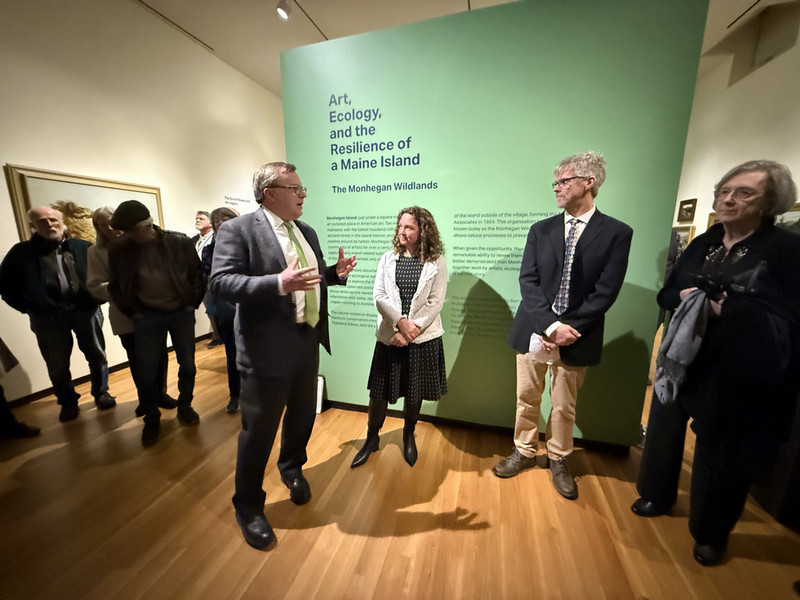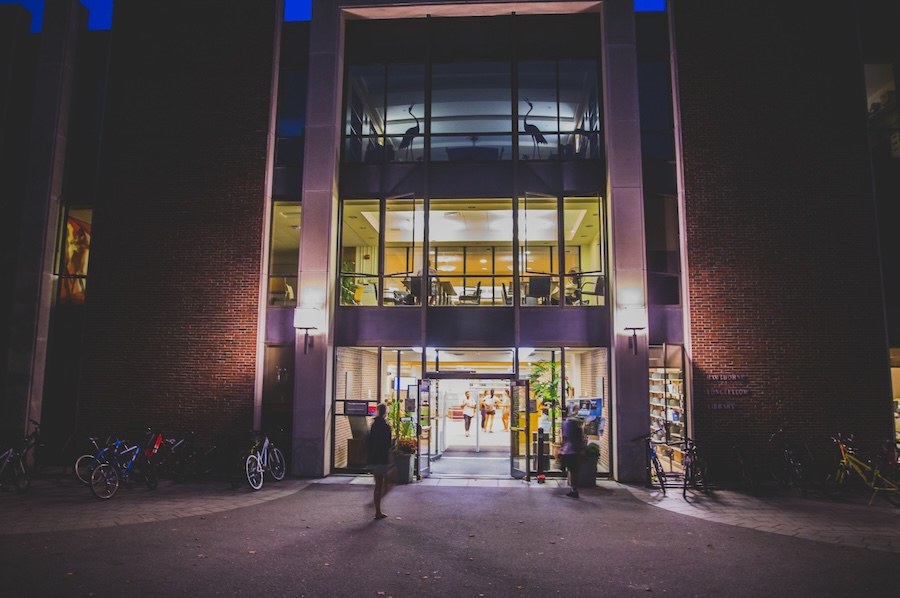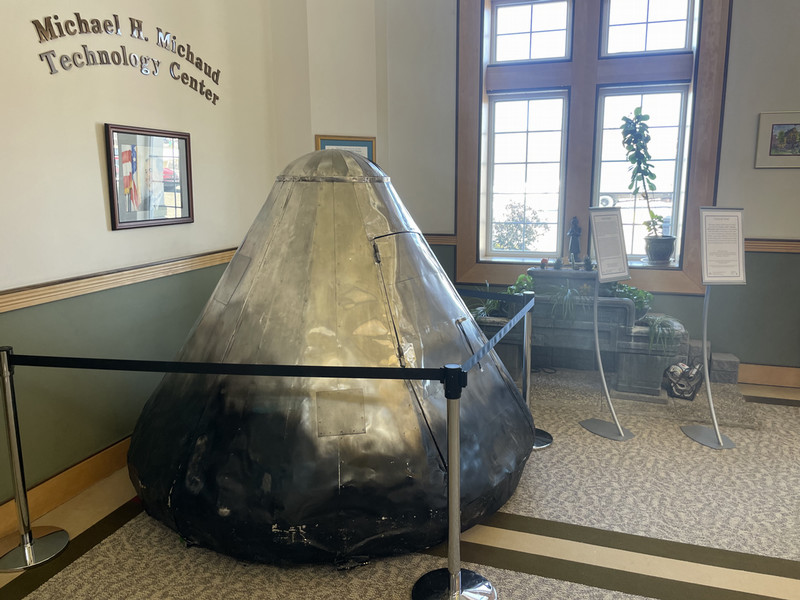First Major Survey Exploring Night in American Art Opens at Bowdoin College Museum of Art on June 27
By Bowdoin College Museum of Art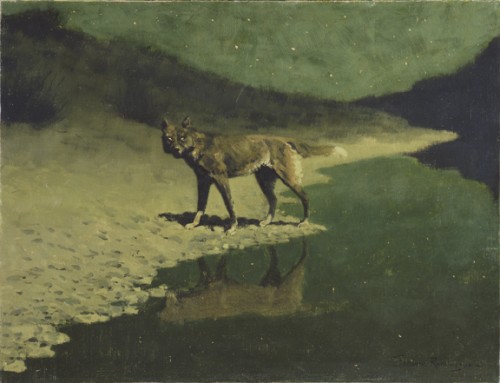
The first major museum survey dedicated to scenes of night in American art from 1860 to 1960—from the introduction of electricity to the dawn of the Space Age—opens at the Bowdoin College Museum of Art (BCMA) this June. Night Vision: Nocturnes in American Artexplores the critical importance of nocturnal imagery in the development of modern art by bringing together 90 works in a range of media—including paintings, prints, drawings, photographs, and sculptures—created by such leading American artists as Ansel Adams, Charles Burchfield, Winslow Homer, Lee Krasner, Georgia O’Keeffe, Albert Ryder, John Sloan, Edward Steichen, and Andrew Wyeth, among others. Featuring works from the BCMA’s robust collection of American art, as well as loans from 30 prestigious public and private collections across the United States—such as The Metropolitan Museum of Art; Phillips Collection; Philadelphia Museum of Art; and Museum of Fine Arts, Boston—the exhibition provides visitors with an opportunity to consider transformations in American art across generations and traditional stylistic confines. Organized by BCMA Curator Joachim Homann, and on view at Bowdoin from June 27 through October 18, 2015, Night Vision demonstrates the popularity of the theme with American artists of diverse aesthetic convictions and investigates how they responded to the unique challenges of picturing the night.
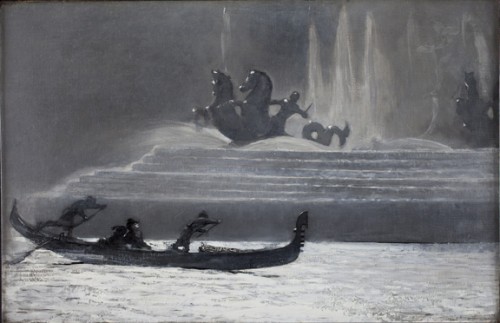
The works featured in Night Vision reflect the diversity of subject matters that attracted artists to night scenes—ranging from reflections of moonlight on ocean waves, to encounters in electrified urban streets, to firework celebrations. For some mid-19th-century artists, such as Albert Bierstadt, paintings of the night offered the compelling artistic challenge of representing the natural elements of clouds, moon, and sky when shrouded in darkness, while at the same time providing rich opportunities for the symbolic use of light. Following the industrial revolution and emergence of electricity in the late 19th and early 20th centuries, artists such as Winslow Homer, Albert Pinkham Ryder, and Charles Burchfield began to use nighttime conditions as a platform to disregard the conventions of naturalism in favor of new techniques, motifs, and artistic ideas. Across the range of works presented in Night Vision, visitors will see how reduced visual information and an altered perception in the dark tested artists’ ability to render shadow, light, and form. This lack of light ultimately resulted in less illustrative scenes and transformed the night into an arena for stylistic experimentation and the rise of abstraction in the early-mid-20th century.
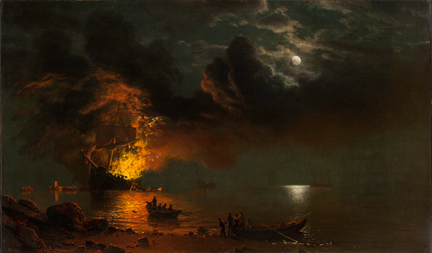
“American artists during this period perceived the night as a catalyst for creative inspiration, expressive possibilities, and picturing nature’s infinite mystery,” said Homann. “When they claimed the moon for themselves, these artists occupied the night as a time of heightened observation and self-reflection— allowing them to become invisible, turn inward, and express personal truths in unique and poetic ways. Bringing this collection of nocturnes together for the first time, Night Vision seeks to expand the broader discourse on American art, the rise of modernism, and the value of art as personal expression.”
Night Vision is organized chronologically beginning with landscape artists’ visions of moonlight, moving to early Modernists’ experimental representations of electrified evenings, and concluding with interpretations of the night by American realists and abstract artists. Notable works in the exhibition include:
- Winslow Homer’s The Fountains at Night, World’s Columbian Exposition (1893), an oil painting created in response to the 1893 World’s Fair in Chicago. The work depicts Frederick MacMonnies’ Columbian Fountain, a monumental neoclassical sculpture illuminated by electricity, helping to promote the United States as a leader in art, science, and industry.
- Henry Ossawa Tanner’s Nicodemus Visiting Jesus (1899), the artist’s renowned painting of a moment in the Gospel of John during which the Pharisee Nicodemus listens intently to Christ’s teachings. Tanner, a master of the religious nocturne, uses light in subtle variations to create a spiritual aura, enhancing the message of the biblical subject matter. This work was one of several paintings Tanner created during his two trips to Jerusalem between 1897 and 1899, after expatriating himself from the United States due to racial discrimination. It was bought by the Pennsylvania Academy of Fine Arts, of which the artist was the first African American graduate.
- George Bellows’s Outside the Big Tent (1912), one of two oil paintings the artist created documenting a benefit circus organized by his wife, Emma, in her hometown of Montclair, New Jersey. Bellows submitted this work’s companion painting, The Circus, to the Armory Show in 1913, where it received high praise for its drama and evocative quality. Both Outside the Big Tent and The Circus exhibit the artist’s signature dynamic brushwork, and predilection for painting spontaneous movement and action.
- Charles Burchfield’s The Night Wind (1918), a haunting watercolor portraying the unsettling effects of darkness and the elements on the human experience as clouds and snow drifts morph into monstrous shapes overtaking a homestead.
- Georgia O’Keeffe’s, New York Night (1927), a prime example of the artist’s now signature modernist style—as well as her shift from depicting nature’s landscapes to urban scenery— developed during her time in New York City between 1926 and 1929. A particularly popular subject during this period, New York skyscrapers were perceived as a symbol of technological innovation. O’Keeffe’s renderings were created based on observations of the height and distance of various structures, as well as the careful study of nighttime conditions and the interplay between light, wind, and the moon. New York Night is one of several paintings that captured the view from the artist’s apartment at the Shelton Hotel.
- Andrew Wyeth’s Night Hauling (1944), an unsettling depiction of a nocturnal lobster thief at work just as the threat of air raids during World War II made the night a time of anxiety. The painting testifies to Wyeth’s ability to record an unusual light condition with great accuracy—phosphorescent algae growing in seawater.
- Beauford Delaney’s Untitled (Jazz Club) (ca. 1950), one of the artist’s depictions of Harlem’s vibrant jazz scene early in his career. During the 1940s and 50s, Delaney’s work focused on portraits, modernist interiors, and street scenes, which he rendered using impasto and large areas of saturated color. It was during this time that he forged close connections with Alfred Stieglitz, Georgia O’Keeffe, and Al Hirschfeld, whose work influenced his own artistic sensibility.
In conjunction with the exhibition, Michel Auder’s three-channel video installation Untitled (I Was Looking Back to See If You Were Looking Back At Me to See Me Looking Back at You) (2012-14) will be presented in the BCMA’s adjoining media gallery. Auder’s poetic and richly textured work captures the urban experience of the night by recording the view from a New York City apartment of the busy streets below and neighboring living-quarters. The artist’s contemporary perspective on the nocturnal city is prefigured in the works by John Sloan, Georgia O’Keeffe, and Edward Hopper presented in Night Vision, and together these works reflect the pervasive fascination with the unique intersection between the private and public spheres during the night.
“We’re thrilled to present Night Vision as the next installment of the BCMA’s program of major summer exhibitions, and to offer our Museum and College audiences an incredible opportunity to engage with American masterworks from across the country,” said Anne Collins Goodyear, Co-Director of the Bowdoin College Museum of Art. “This exhibition reveals fresh perspectives on the transformative power and uniqueness of night as a critical theme in American art,” continued Frank Goodyear, Co-Director of the Bowdoin College Museum of Art. “While it is perhaps not surprising that artists have found the night such a compelling subject for centuries, Night Visionsheds new light on the technical complexities and personal meanings embedded in its depictions, as well as how the period’s unique cultural and social climate influenced subsequent artistic movements.”
Night Vision is accompanied by a fully illustrated catalogue, which includes a lead essay by Joachim Homann on the allure of the night for modern artists from Georgia O’Keeffe to Lee Krasner. Contributions by Linda Docherty, Associate Professor Emerita of Art History; Alexander Nemerov, Professor of Art and Art History, Stanford University; Avis Berman, art historian and curator, New York; and Daniel Bosch, poet and faculty member, Emory University, explore aspects of American night scenes, such as the nighttime celebration of the Fourth of July, the symbolism of the moon, urban nightlife, and visual images of the night invoked in poetry of the period. The catalogue is available at Bowdoin’s on-line store, the Museum Shop, and fine booksellers everywhere.
Major programming related to the exhibition includes scholarly lectures by Barbara Haskell, Curator of painting and sculpture, Whitney Museum of American Art; Eleanor Harvey, Senior Curator, Smithsonian American Art Museum, and Alexander Nemerov. Students and volunteer docents will lead gallery tours. In addition, the BCMA is organizing film screenings, musical performances, and family day events.
Major support for Night Vision is provided by Edward S. Hyman P’10 and Caroline P. Hyman P’10, Eric S. Silverman ’85, P’19 and Svetlana G. Silverman P’19, the Elizabeth B. G. Hamlin Fund, the Louisa Vaughan Conrad Fund, and the Becker Fund for the Bowdoin College Museum of Art. Additional support has been provided by the Cowles Charitable Trust, the Devonwood Foundation, halley k harrisburg ’90 and Michael Rosenfeld, the Roy A. Hunt Foundation, Thomas A. McKinley ’06 and Hannah Weil McKinley ’08, and Peter J. Grua ’76 and Mary G. O’Connell ’76. The catalogue was published with the assistance of the Wyeth Foundation for American Art.

